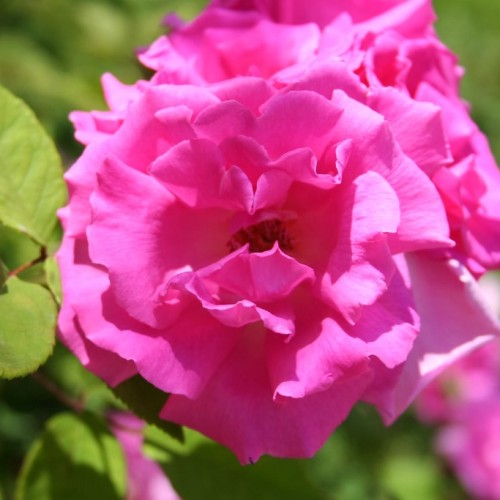
bourbon rose
Rosa 'Zéphirine Drouhin'
Cycle:
Perennial
Watering:
Average
Hardiness Zone:
5 - 9
Flowers:
Flowers
Sun:
Full sun
Leaf:
Yes
Growth Rate:
Low
Maintenance:
Moderate
Drought Tolerant:
Yes
Salt Tolerant:
Yes
Thorny:
Yes
Care Level:
High
watering
The Bourbon rose (Rosa 'Zéphirine Drouhin') requires semi-frequent, but not excessive, irrigation. The soil should be kept moist, but not overly wet. It is important to water plants in the early morning, so that the foliage is dry by nightfall in order to discourage disease. During the peak of summer, the plant should receive 1 inch (2.5 cm) of water per week, applied in 2 or 3 separate waterings. Water during times of drought or very hot weather. Avoid splashing water on the plant for fear of disease. During the cooler months, the plant should receive just enough water to keep the soil from drying out completely.
sunlight
The Bourbon rose (Rosa 'Zéphirine Drouhin') thrives best in full sun to partial shade and should receive at least 6 to 8 hours of direct sunlight every day. This rose variety also requires well-drained soil, ample water and fertilizer to grow properly. It is best to water the rose early in the day so that the foliage has a chance to dry completely before the evening. Fertilizer should only be applied twice a month during spring and summer, when the rose is actively growing.
pruning
Bourbon roses should be pruned at least once each year in late winter or early spring. Pruning should be done in 2 stages. First, any dead or diseased branches should be removed and then thinning cuts should be made to reduce the length of the remaining branches. Remove no more than a quarter of the growth at once. The canes should be cut to a length of 3 to 4 feet above ground level in order to maintain the desired shape of the shrub. If the roses have not been pruned for several years, more extensive pruning may be necessary. In this case, remove up to half of the canes, although it still recommended to leave some of the longest canes intact for future growth.
